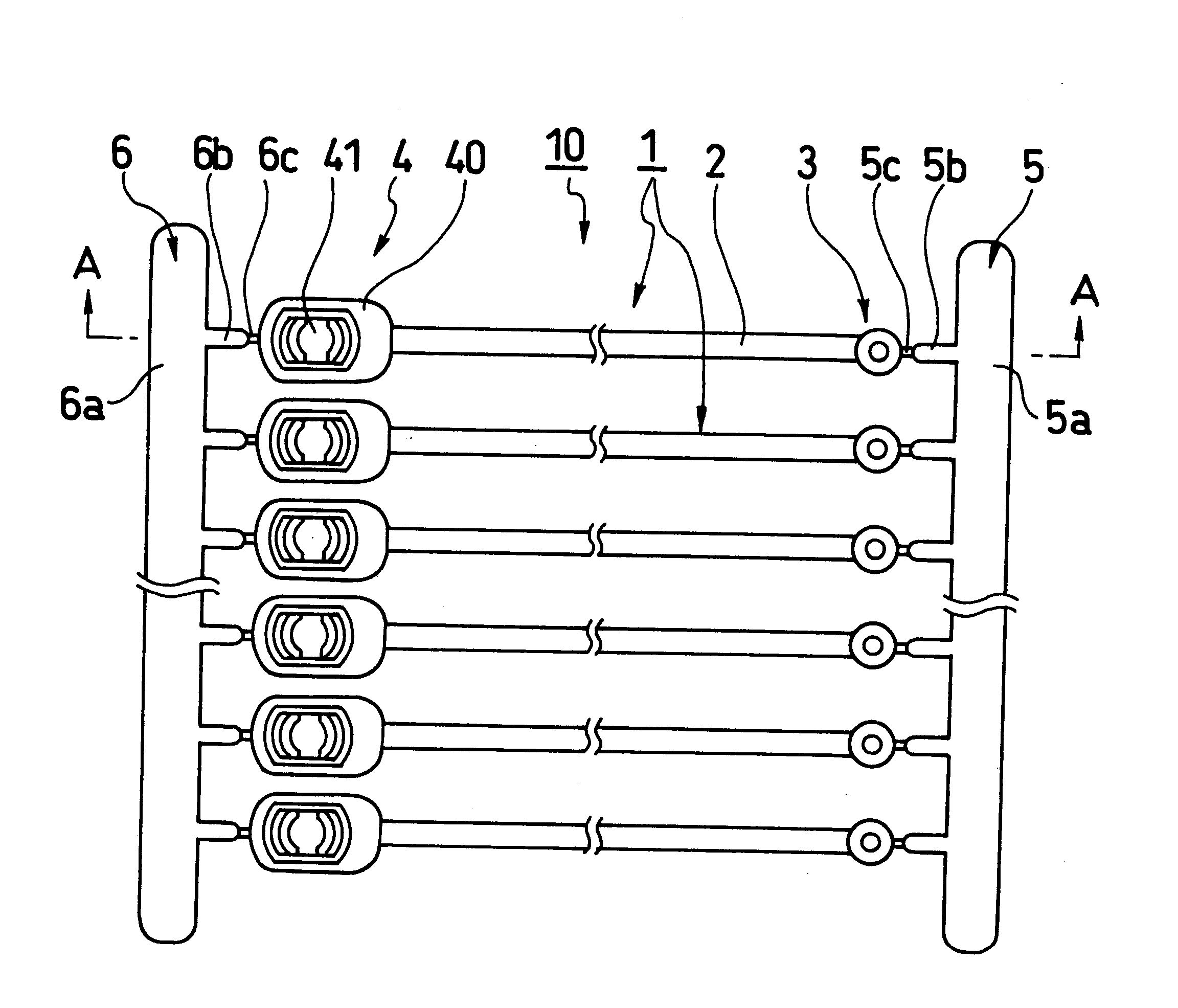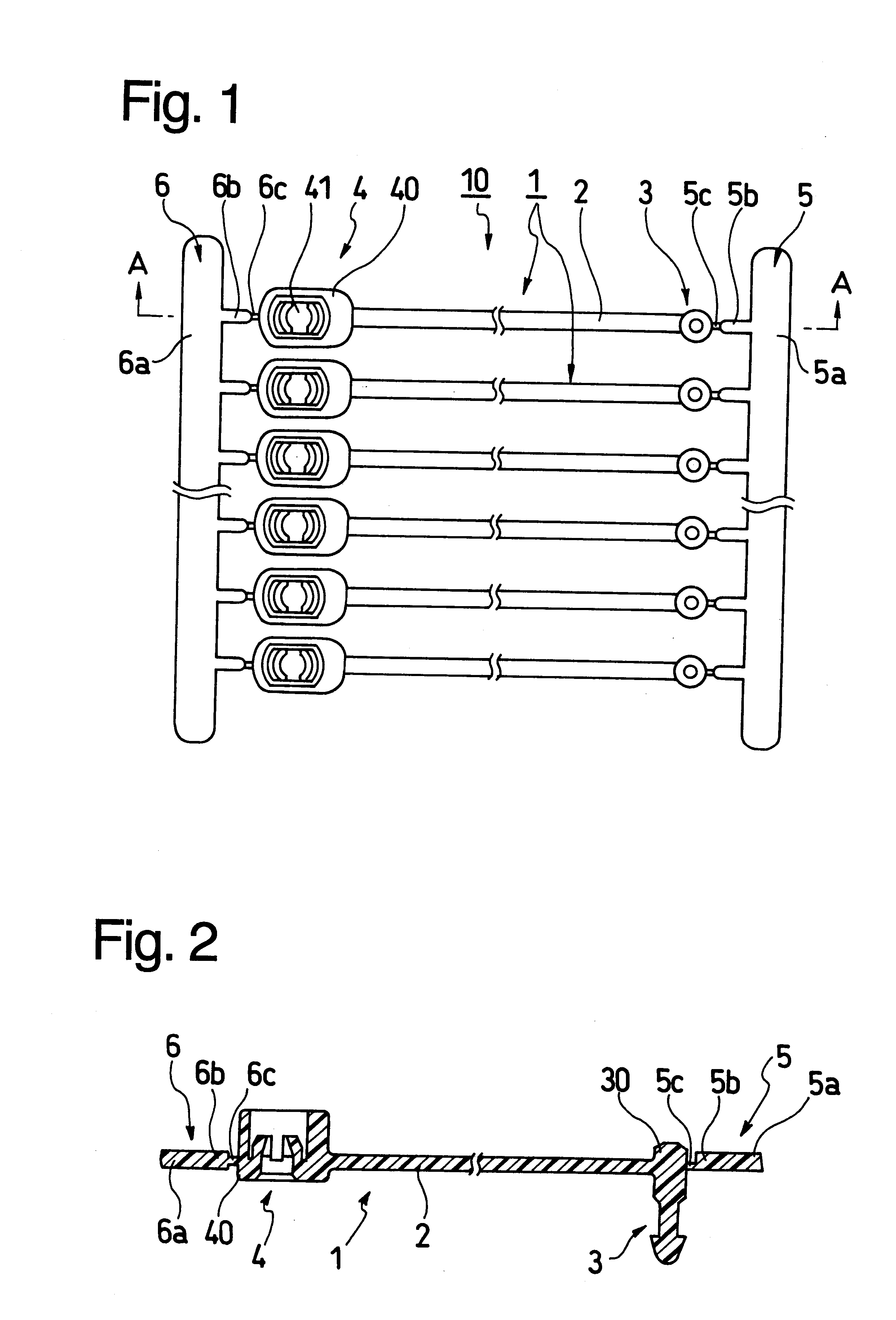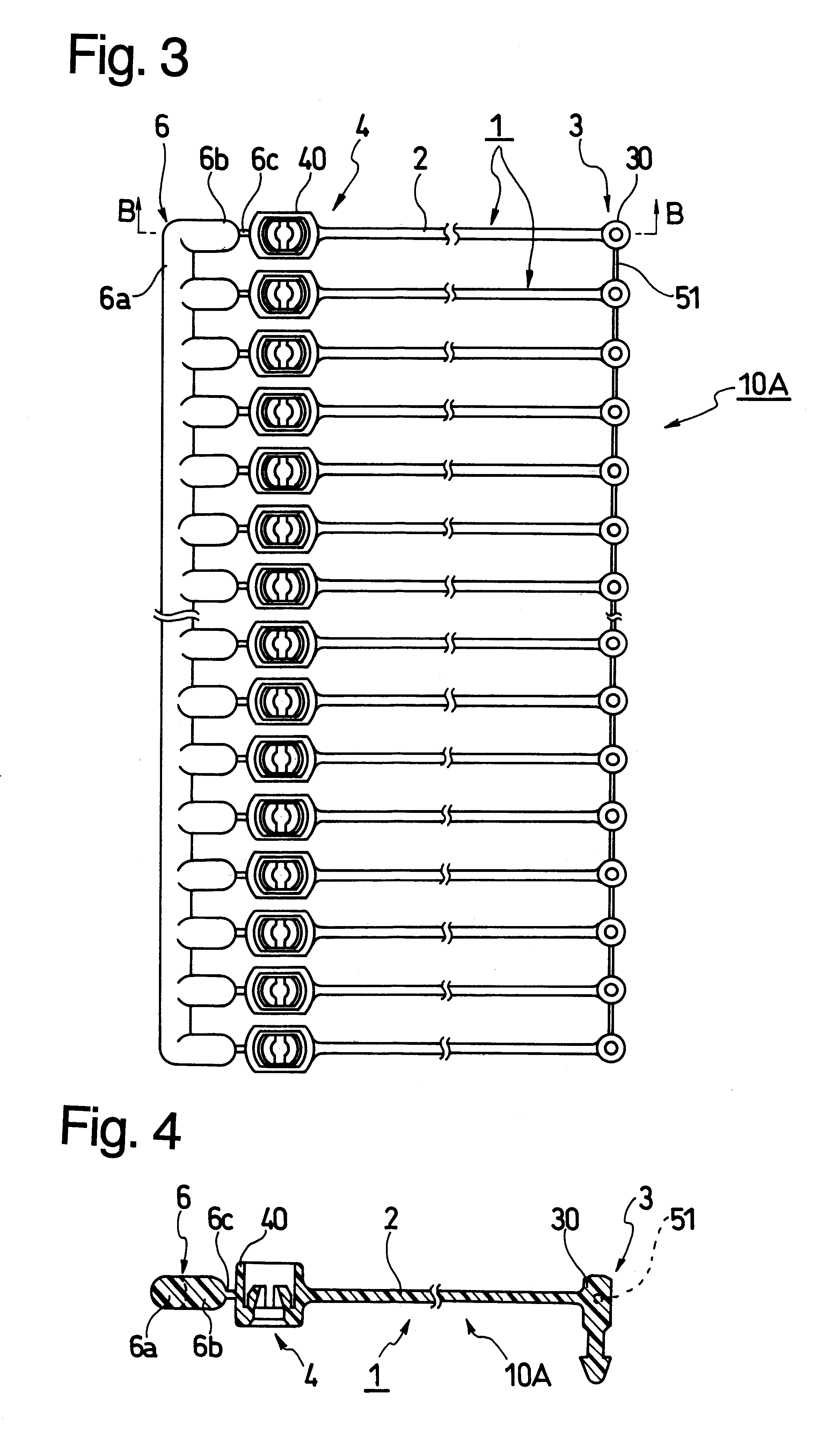Fastener assembly
a technology of fasteners and components, applied in the field of fasteners, can solve the problems of affecting the service life of the fastener, and affecting the service life of the fastener, and achieve the effect of simple disassembly in the device and easy disassembly
- Summary
- Abstract
- Description
- Claims
- Application Information
AI Technical Summary
Benefits of technology
Problems solved by technology
Method used
Image
Examples
first embodiment
First of all, the fastener assembly 10 of a first embodiment, as shown in FIGS. 1 and 2, corresponds to the construction in which the filament portions 2 have a relatively large length or a relatively low rigidity. The first joint member 5 is formed of: a first joint rod 5a having a relatively large sectional area and a relatively high strength; first projections 5b projecting in the shape of comb teeth from the first joint rod 5a; and first cutting portions 5c leading from the first projections 5b to the trunk portions 30 of the retaining projections 3 and formed in the extending direction of the filament portions 2 while being reduced in their sections to be easily cut. The first joint member 5 thus formed is jointed to the retaining projections 3 on the side opposed to the filament portions 2.
Like the first joint member 5, on the other hand, the second joint member 6 is formed of: a second joint rod 6a having a relatively high rigidity; second projections 6b projecting in the sha...
second embodiment
Next in the fastener assembly 10A of a second embodiment shown in FIGS. 3 and 4, the retaining projections 3 are jointed one another at their trunk portions 30 by first temporary joint portions 51 of a thin filament shape having a small section, and the fitting portions 4 are jointed at their frame portions 40 to the second joint member 6 having the second cutting portions 6c formed in the extending direction of the filament portions 2. This second joint member 6 is formed of: a second joint rod 6a having a relatively high rigidity; second projections 6b projecting in the shape of comb teeth from the second joint rods 6a; and second cutting portions 6c leading from the second projections 6b to the frame portions 40 of the fitting portions 4 and formed in the extending direction of the filament portions 2 while being reduced in their sections to be easily cut. The second joint member 6 thus formed is jointed to the fitting portions 4 on the side opposed to the filament portions 2.
Mor...
third embodiment
On the other hand, the fastener assembly 10B of a third embodiment shown in FIGS. 5 and 6 corresponds to the construction having filament portions 2 having a relatively small length and a relatively high rigidity. The trunk portions 30 of the retaining projections 3 are mutually jointed by the first temporary joint portions 51 having a small section, and the frame portions 40 of the fitting portions 4 are mutually jointed by the second temporary joint portions 61 having a small section.
Moreover, the fasteners 1 are jointed by the first temporary joint portion 51 and the second temporary joint portions 61 so that they are arrayed in a sheet shape, and the axes of the retaining projections 3 and the axes of the engaging holes 42 of the fitting portions 4 are formed perpendicular to the arrayed plane of the fasteners 1.
The sizes of the ordinary fastener assembly 10, 10A or 10B will be exemplified in the following. For the aforementioned sizes of the fasteners 1: the distances between c...
PUM
| Property | Measurement | Unit |
|---|---|---|
| Angle | aaaaa | aaaaa |
| Area | aaaaa | aaaaa |
Abstract
Description
Claims
Application Information
 Login to View More
Login to View More - R&D
- Intellectual Property
- Life Sciences
- Materials
- Tech Scout
- Unparalleled Data Quality
- Higher Quality Content
- 60% Fewer Hallucinations
Browse by: Latest US Patents, China's latest patents, Technical Efficacy Thesaurus, Application Domain, Technology Topic, Popular Technical Reports.
© 2025 PatSnap. All rights reserved.Legal|Privacy policy|Modern Slavery Act Transparency Statement|Sitemap|About US| Contact US: help@patsnap.com



